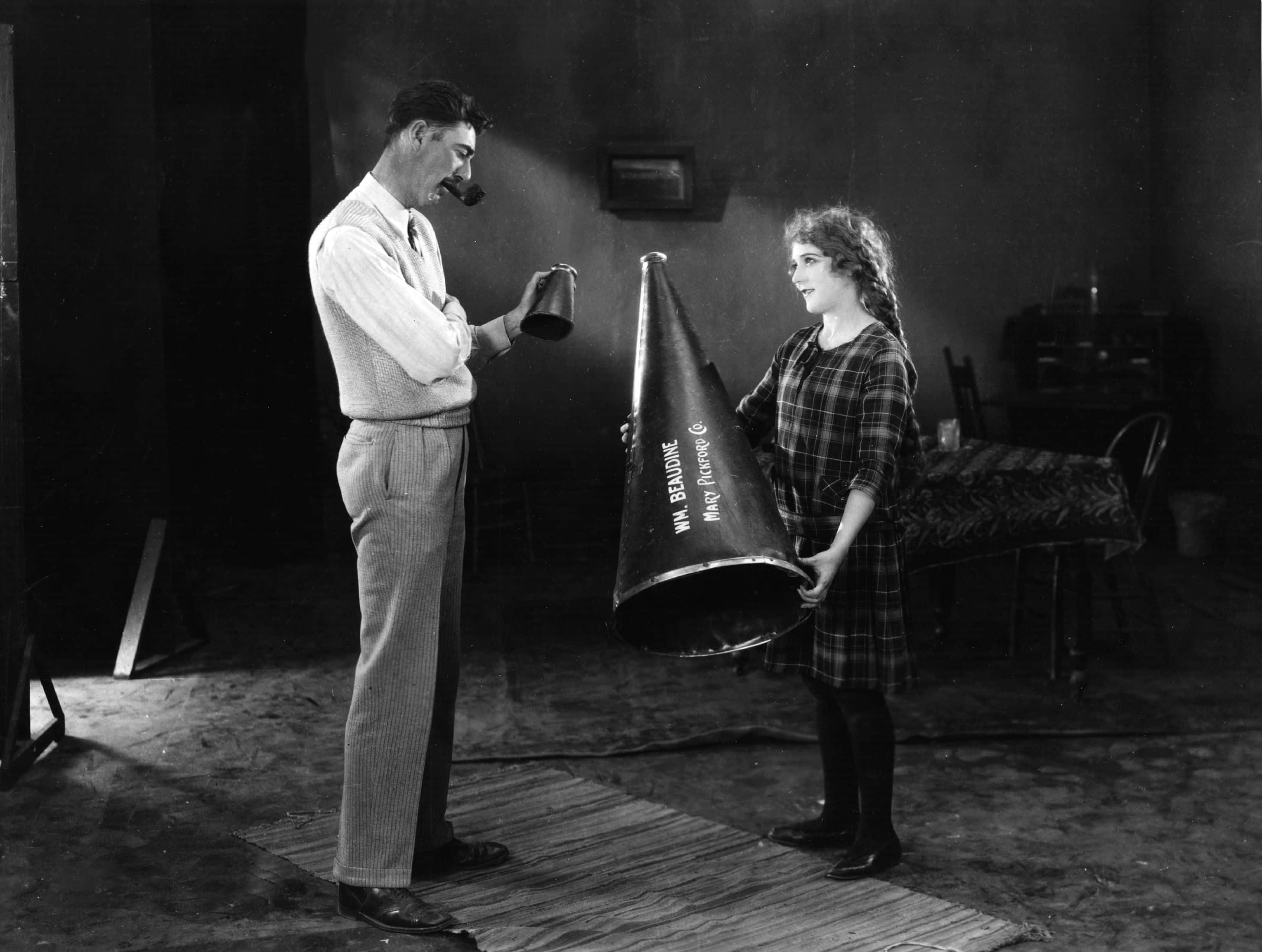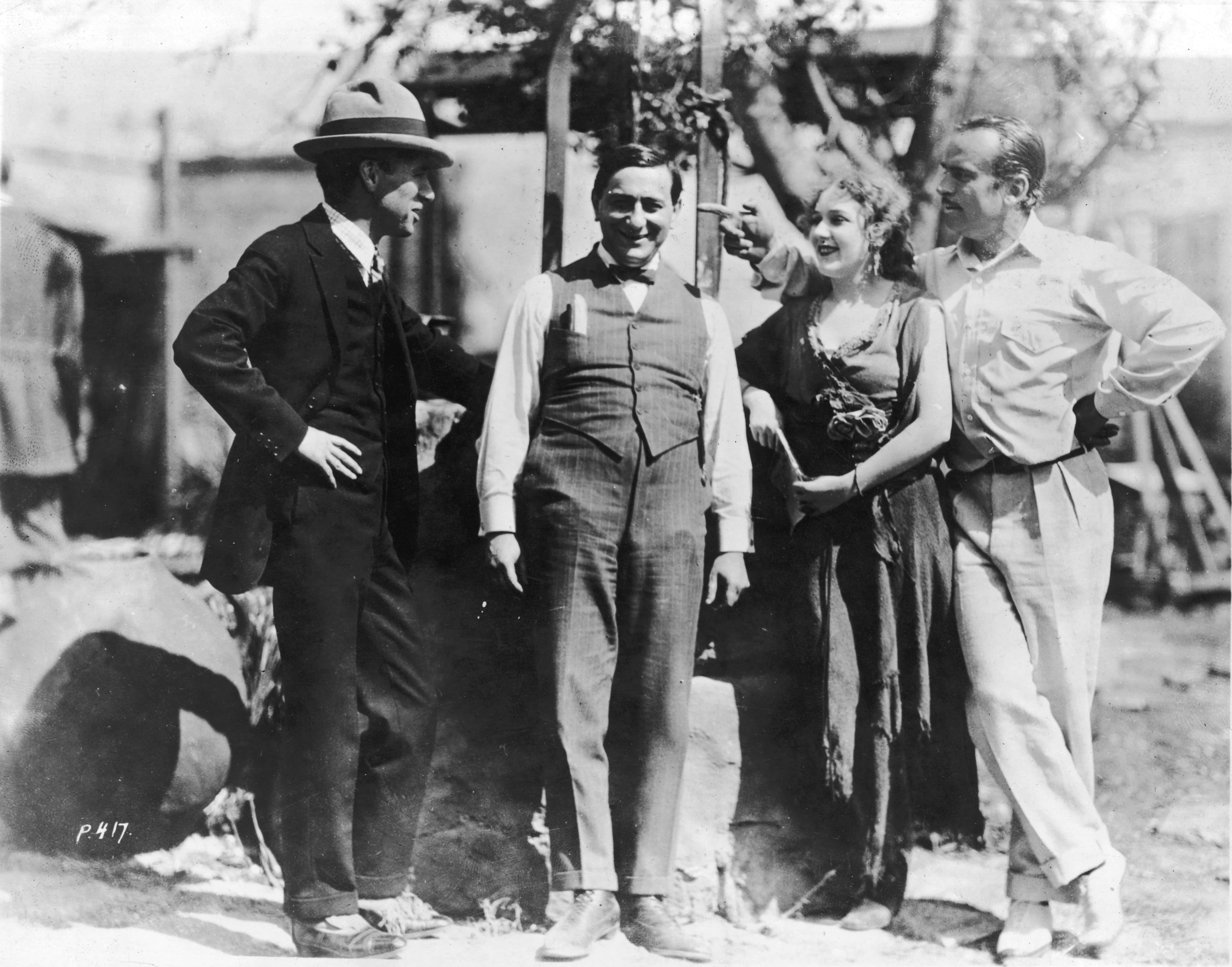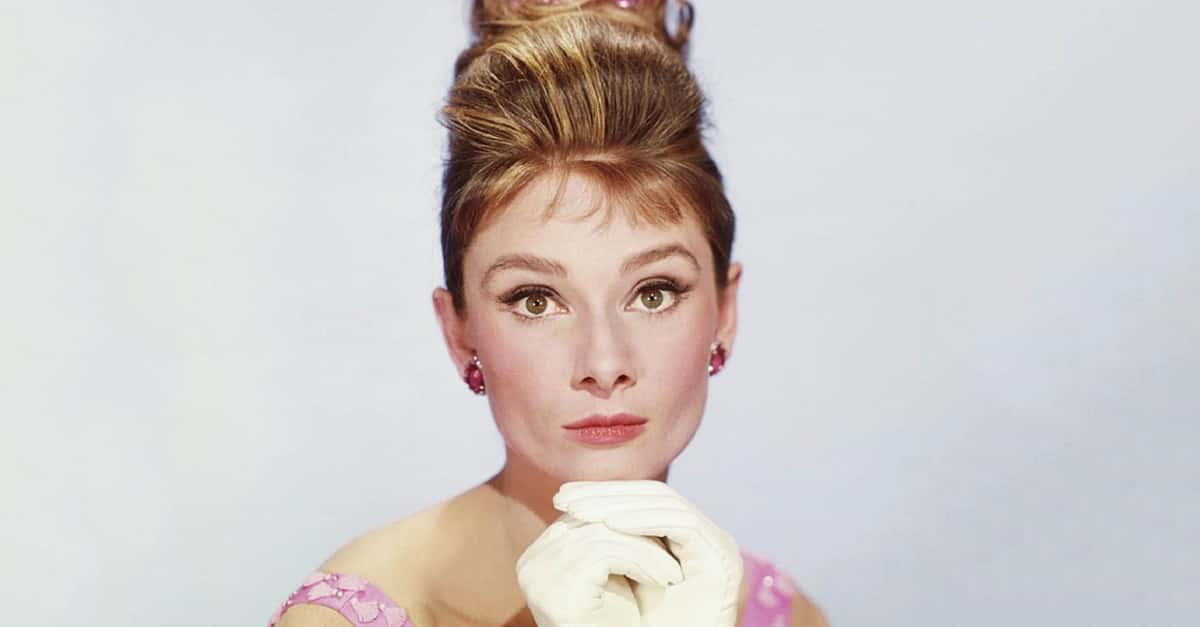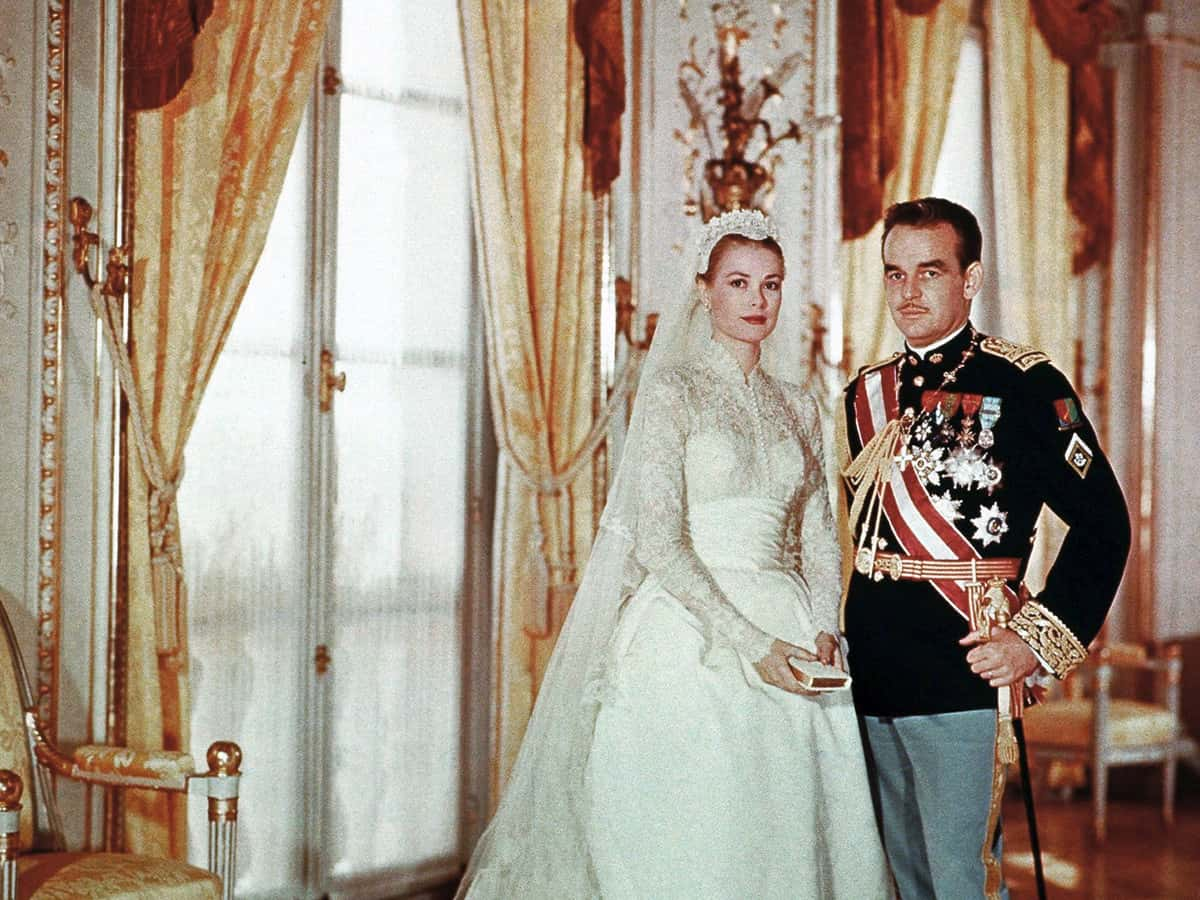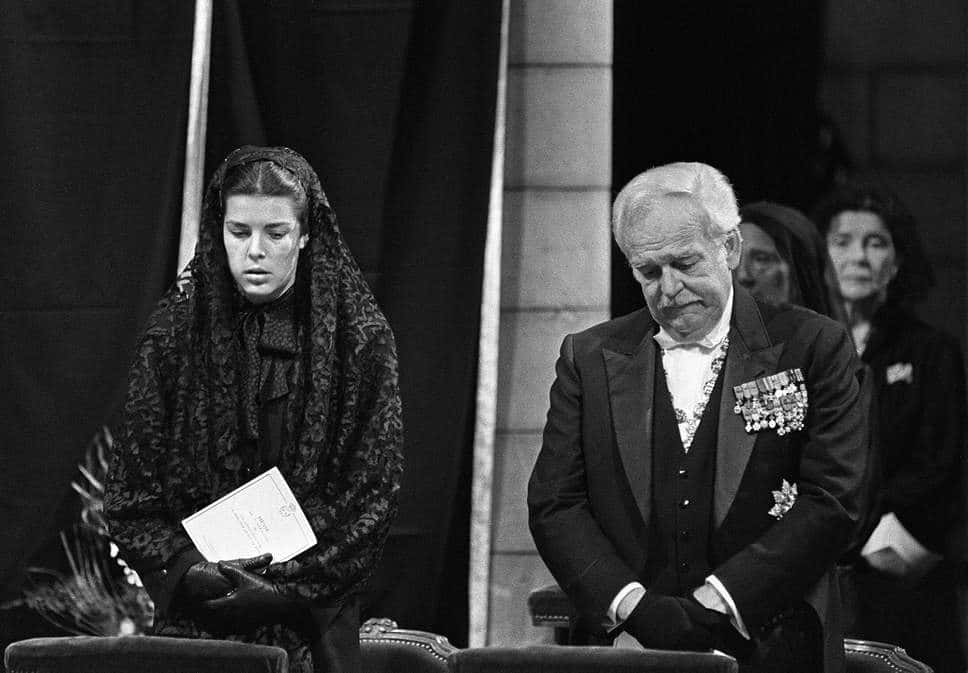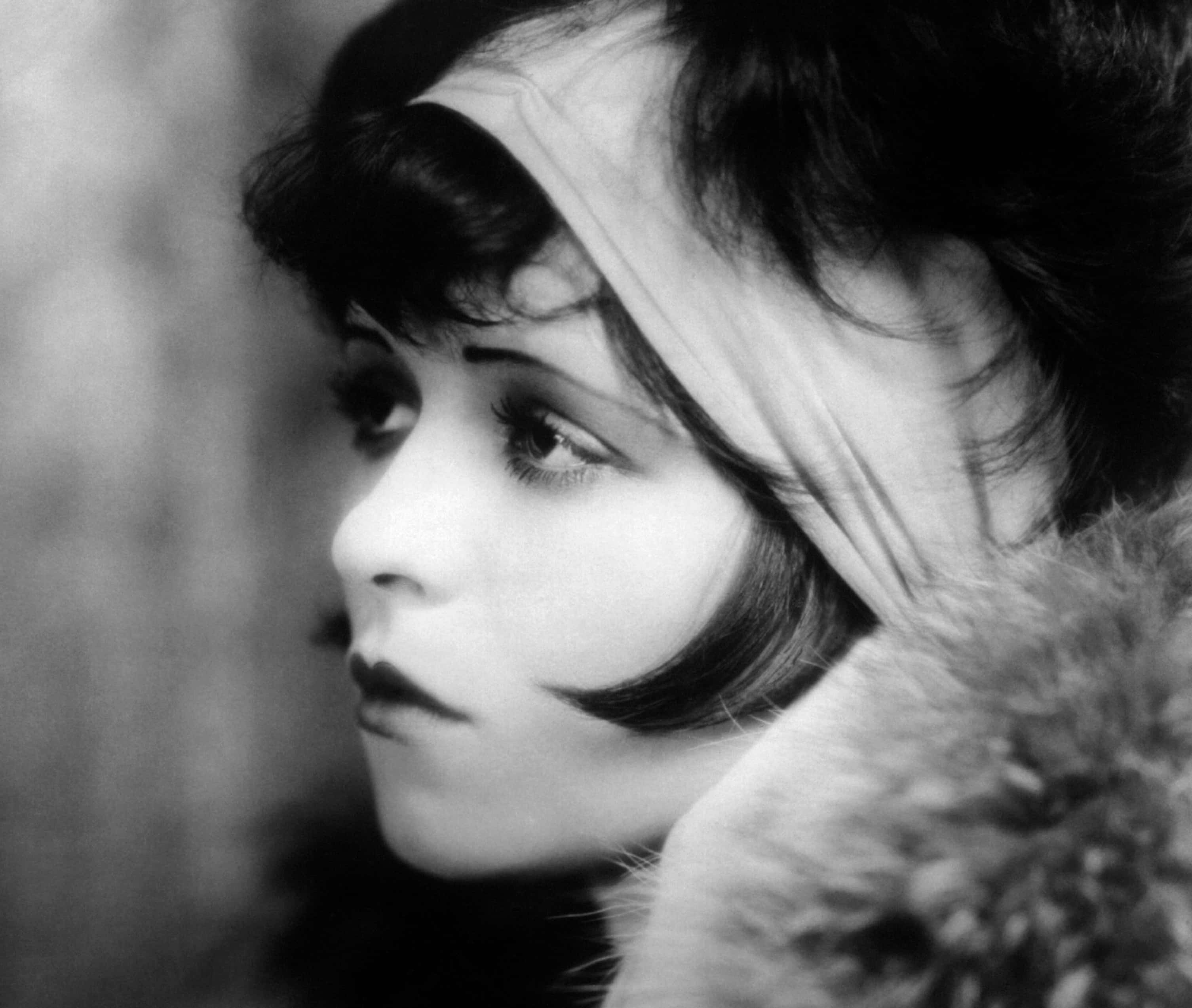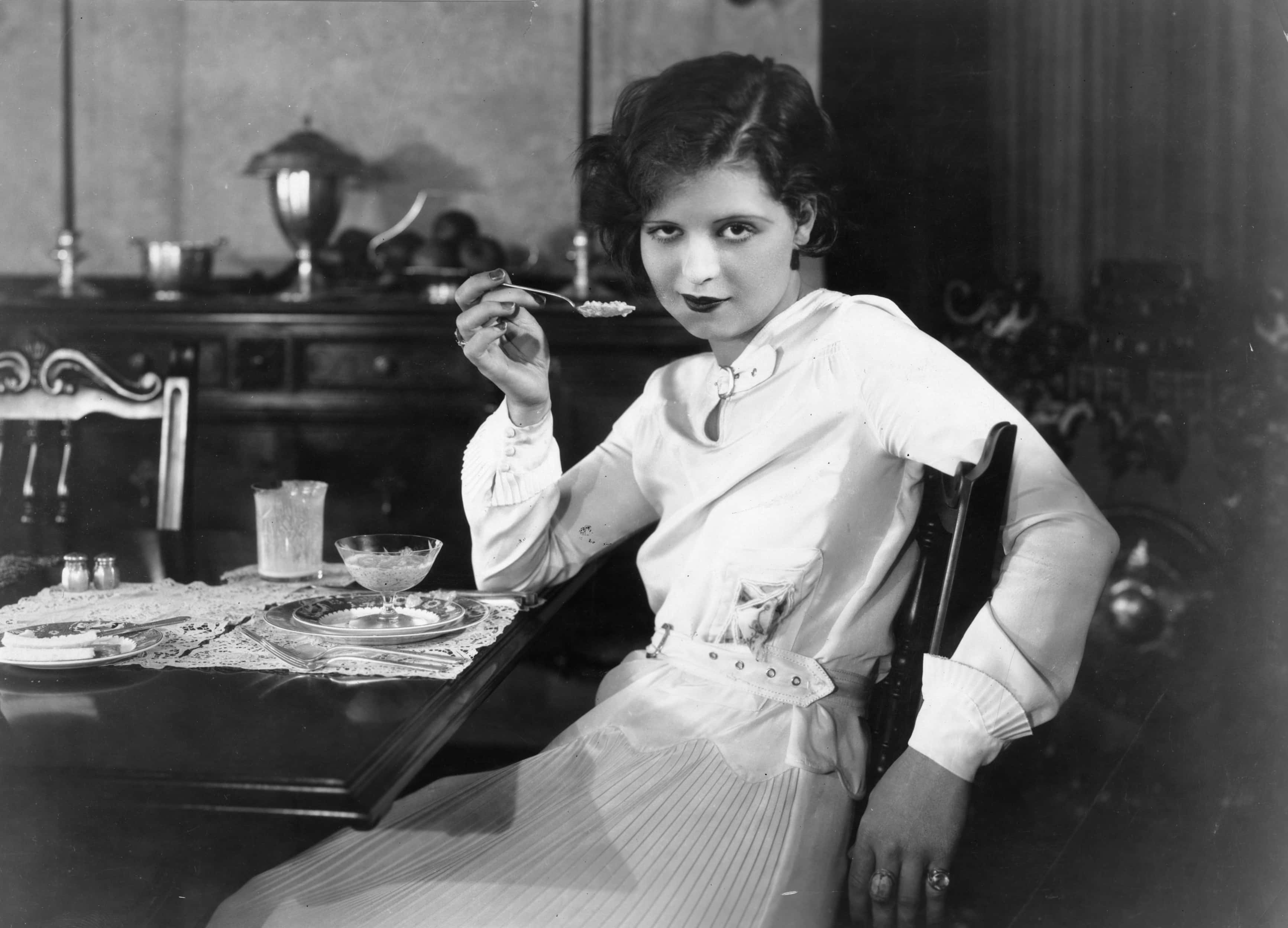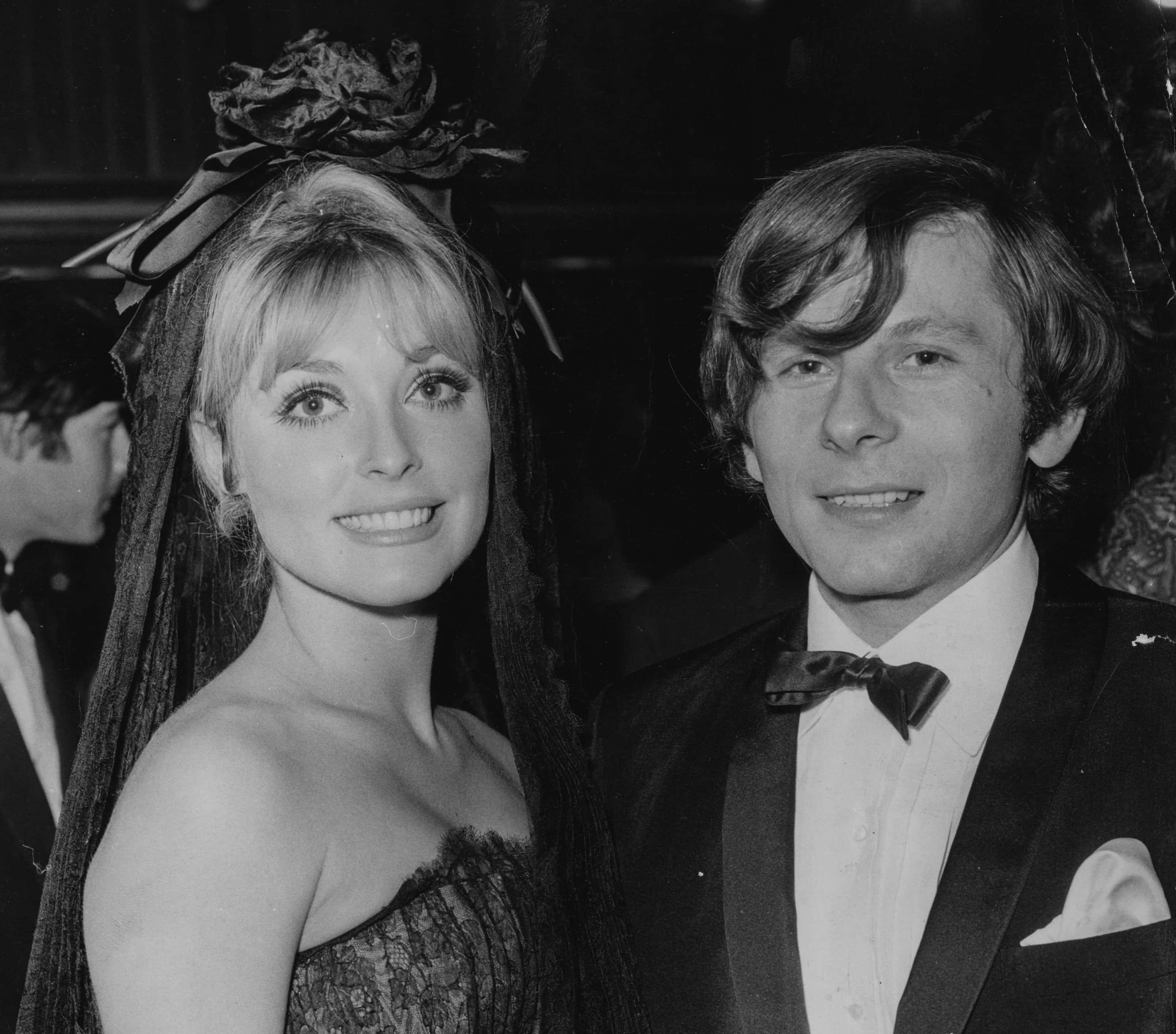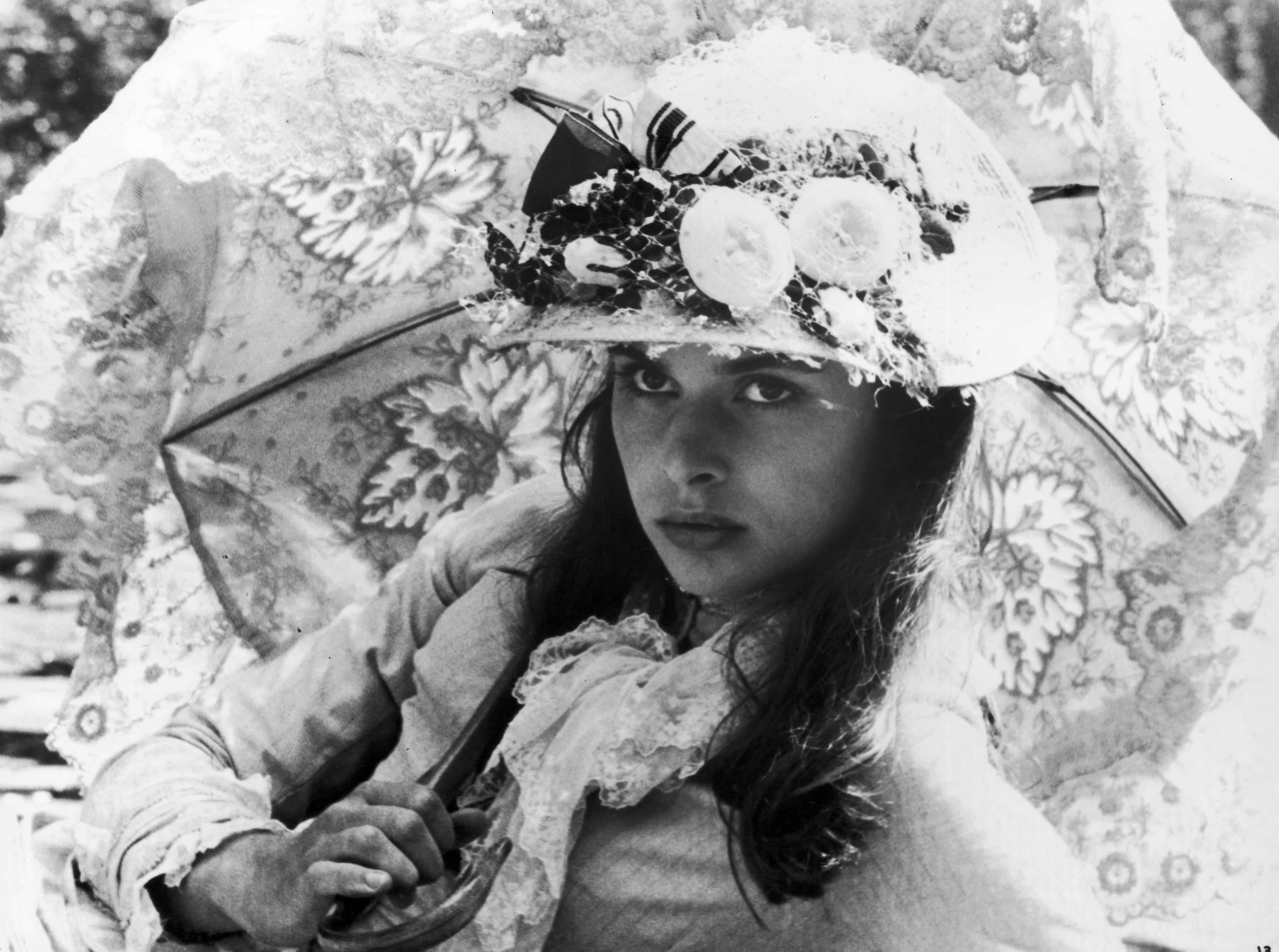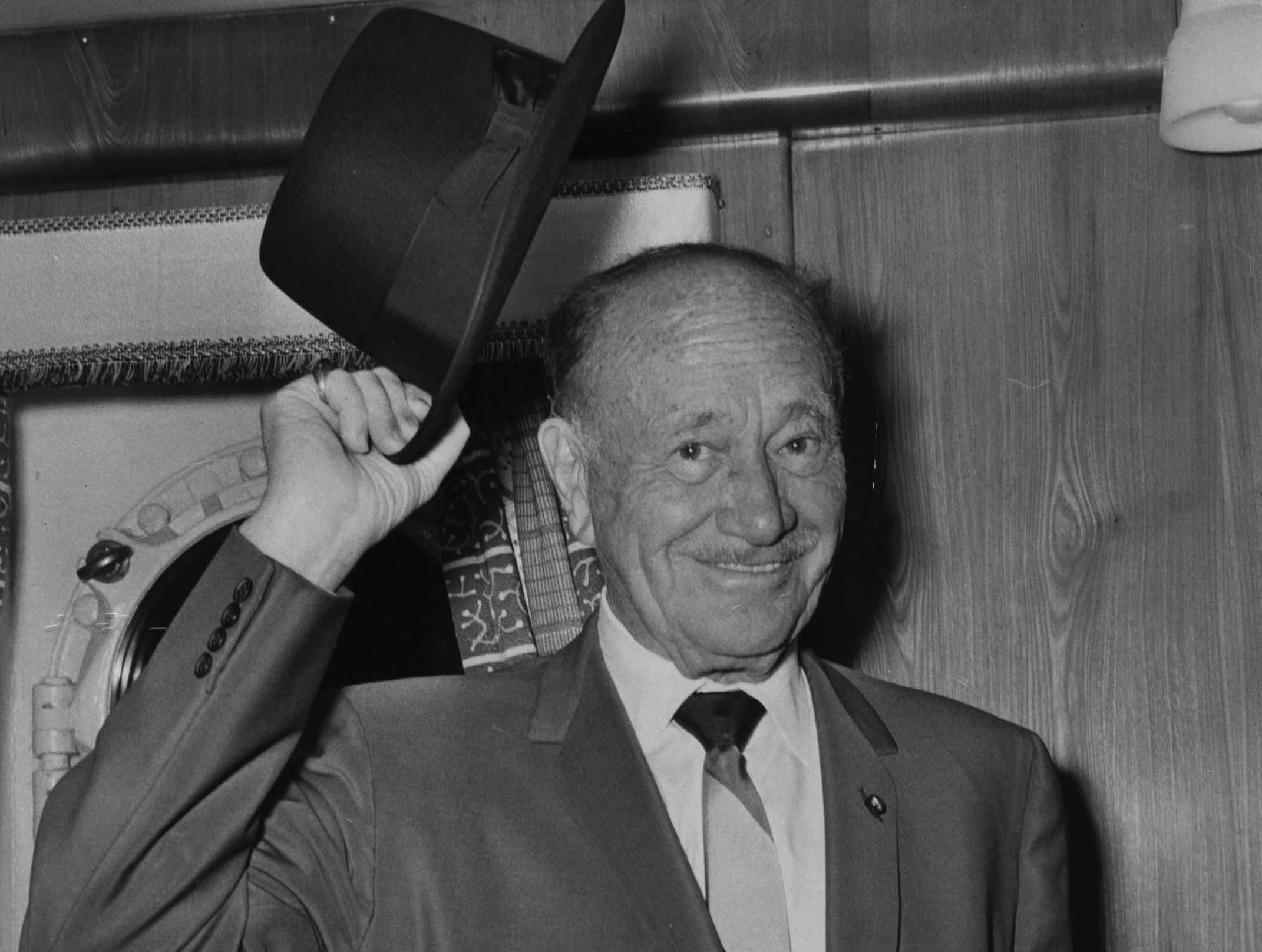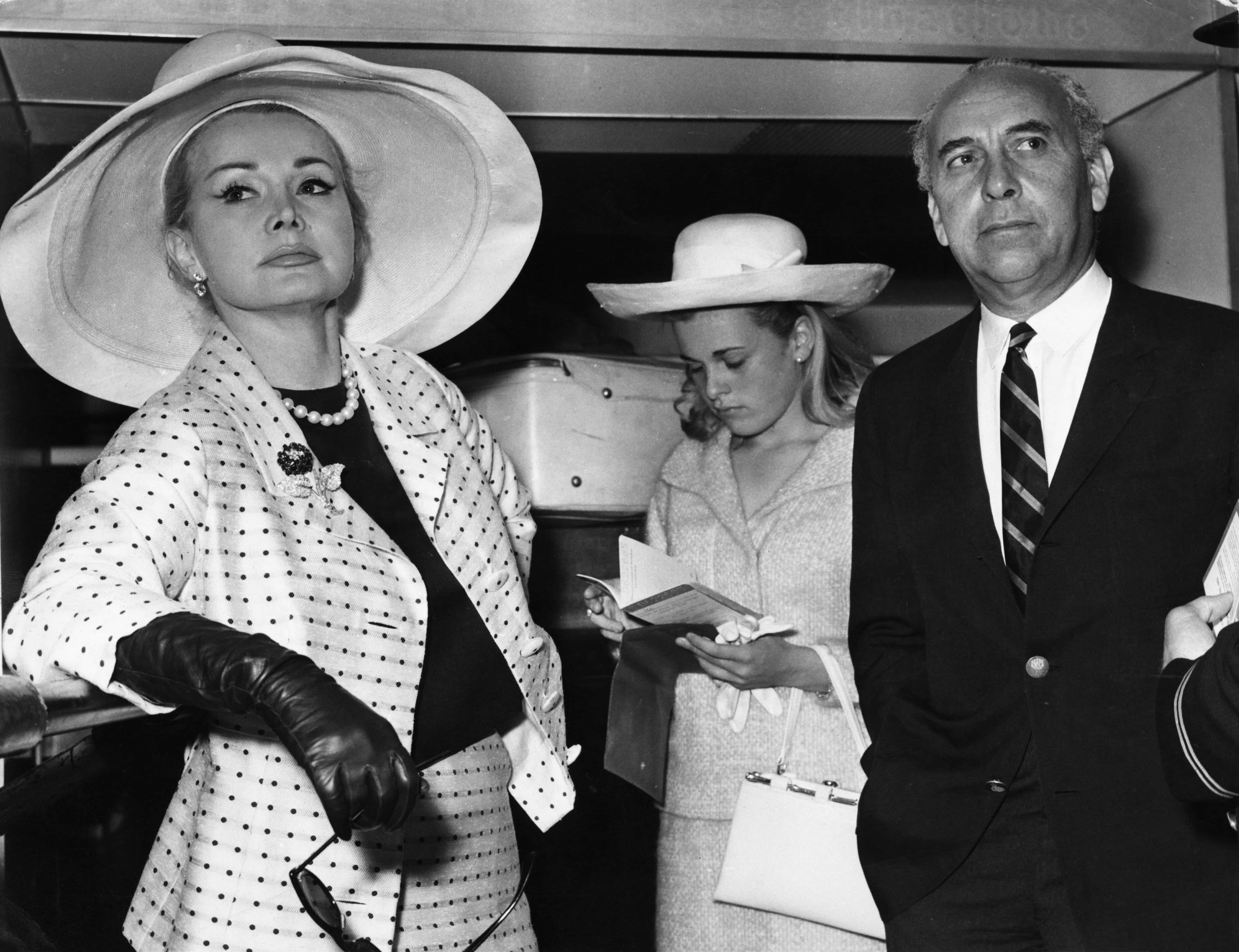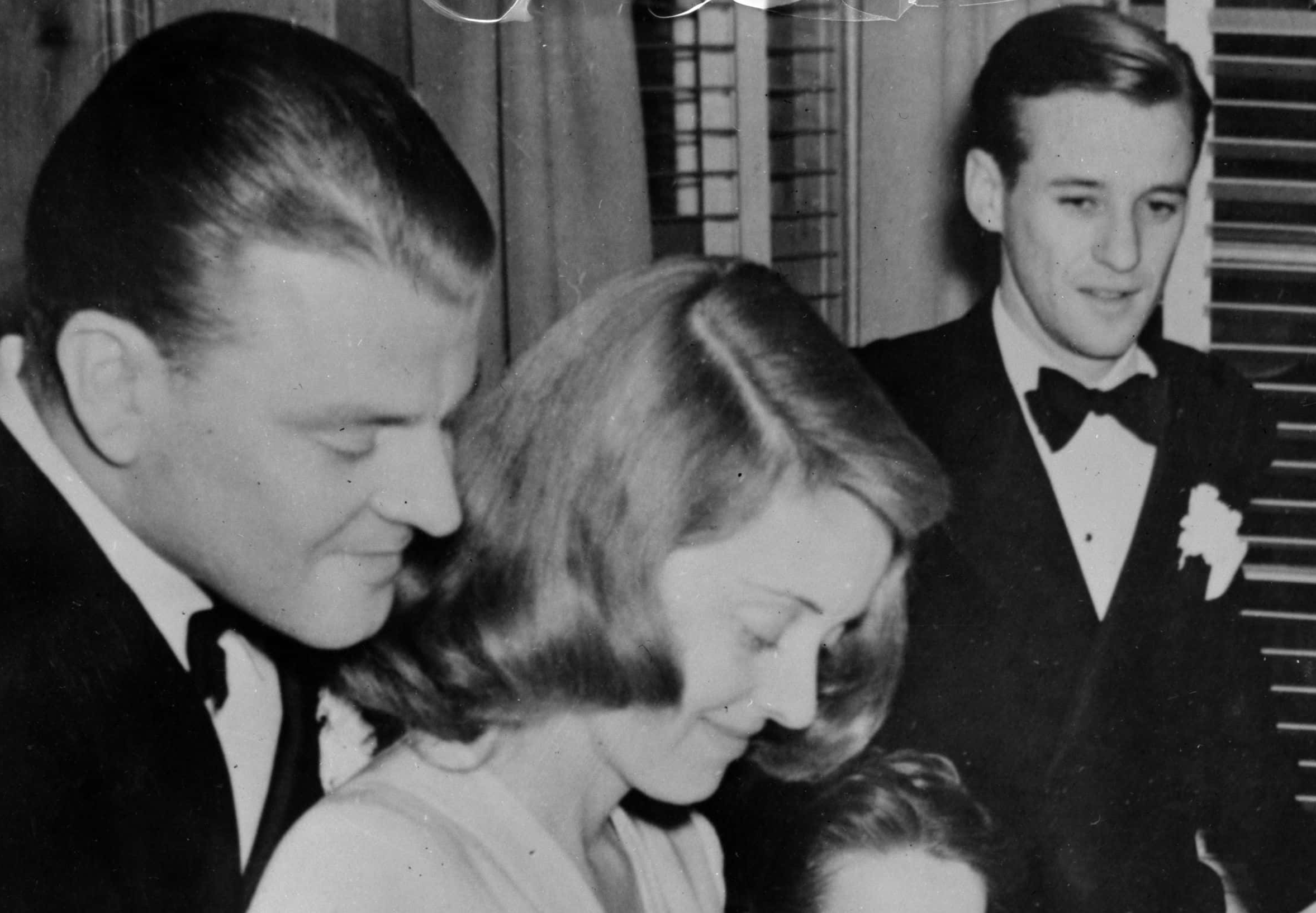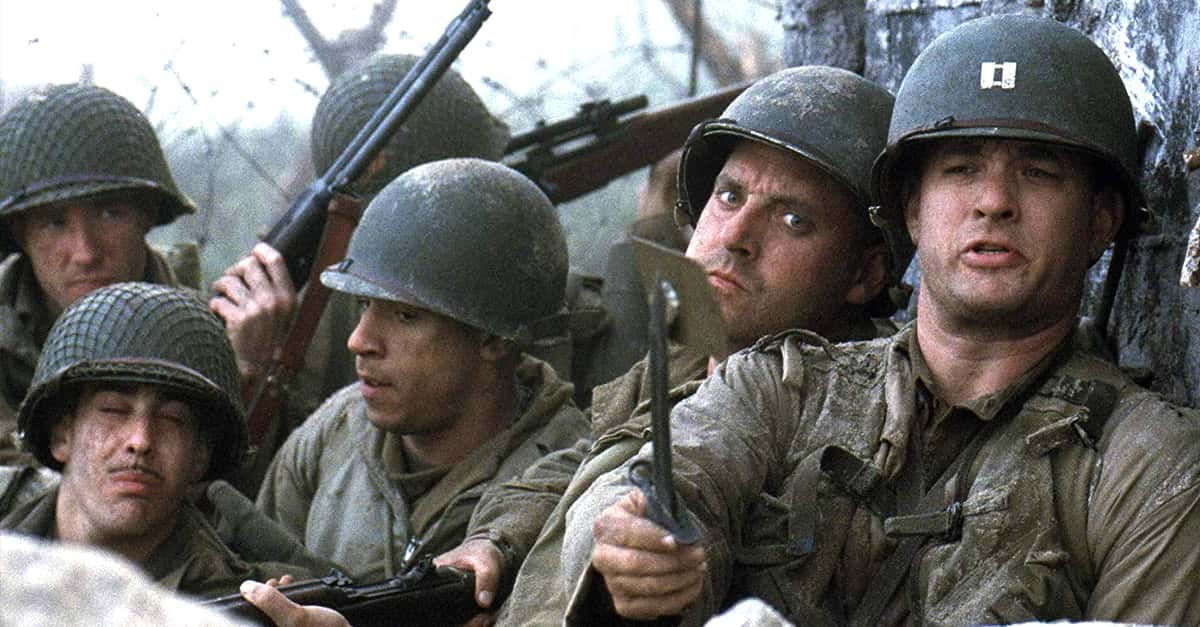In Old Hollywood, the studio system reigned supreme. Executives were always trying to cover up their glamorous starlets' darkest secrets and keep these wild, young girls out of the tabloids. Yet despite this, Hollywood's most beautiful women somehow always found themselves knee-deep in tragedy.
Here are glamorous facts about the most scandalous Old Hollywood actresses.
1. Poor Little Marilyn
Marilyn Monroe is one of the most tragic actresses in Hollywood history, but her hardships began even before she was born. Her mother Gladys was a paranoid schizophrenic who was completely unprepared to have a child. Gladys was placed her newborn daughter in foster care, and for much her childhood, Monroe only saw her mother sporadically.

2. A Rose by Any Other Name…
Everyone knows Marilyn Monroe's real name was actually Norma Jeane Mortenson. What they don't know is all the other names Monroe tried out before becoming a big star: she modeled with the names Jean Norman and Mona Monroe, and hoped to make it on the silver screen with the glamorous name "Jean Adair". It took a long time for her to settle on her now iconic moniker.
The name was so unfamiliar to her that the first time she signed an autograph as "Marilyn Monroe," she had to ask how to spell it.
3. Vulnerable
While staying in foster care, Monroe suffered a series of abuses and tragedies at the hands of the people who were supposed to protect her. The trauma caused Monroe's grades to slip, and eventually the sensitive girl even developed a stutter. Later on, Monroe would confess that she often felt like no one ever wanted her.
4. Line Please, Sugar
Monroe found it almost impossible to learn lines, and took 60 takes to deliver the simple line “It’s me, Sugar” in Some Like It Hot.
5. Cruel Curtis
Sadly, the filming of the beloved Some Like It Hot was incredibly difficult for Monroe. She had issues with her mental health, and often suffered sudden crying fits where she would lock herself in her trailer and cling to her acting coach. As a result, the cast and crew began to resent the star’s presence, and they treated her with incredible aggression.
When it was time for a kissing scene between Monroe and co-star Tony Curtis, he sniped that he’d “rather be kissing Adolf H.".

6. Love of Children
The paradox in Marilyn’s life was that although she never had a child of her own, she absolutely adored children and always yearned for a baby. She had close relationships with her stepchildren from her marriages to Joe DiMaggio and Arthur Miller. Though Marilyn was pregnant several times, she miscarried because she suffered from endometriosis and ectopic pregnancies.

7. Brains and Beauty
When she was a rising star, Monroe and the studios played upon her looks and created a "blonde surprise" persona. Sadly, "blonde surprise" is apparently next door to "dumb blonde," and she began being typecast as just that, which she hated. Probably because in reality, she was actually extremely intelligent. She had an IQ of 168.

8. Weight Woes
Monroe's weight went up and down throughout her life and closely aligned with her emotional turbulence. Her figure shifted so dramatically during the filming of The Prince and the Showgirl that the costume designer, Beatrice Dawson, had to create facsimile dresses in different sizes. “I have two ulcers from this film,” Dawson said, “and they’re both monogrammed MM".

9. Papa Clark
Marilyn had a fixation with Clark Gable, her co-star in The Misfits. Monroe never knew who her father was, and as a young girl, she had dreamed that Gable was her father. When Gable passed, she said that she cried for two days.
10. Without Clothes
Monroe loved to walk around undressed, at least among female studio employees. She also gave interviews in without clothes, and often went out wearing nothing under a black mink coat. Though sometimes these spicy habits got her in hot water—including an infamous scandal concerning a 1949 undressed photoshoot—she wouldn't have it any other way.
11. Sewn in
On May 19, 1962, Marilyn Monroe infamously serenaded President John F. Kennedy with a sultry, sexy rendition of "Happy Birthday". At the time, she was rumored to be his lover—but whatever the truth of the matter, Monroe made sure she was unforgettable on stage: her dress that night was so tight that it had to be sewn onto her.
12. In Solemn Memory
Marilyn Monroe's passionate but short-lived marriage to Joe DiMaggio lasted just a year, from 1945 to 1955. However, the union reverberated for the rest of her life—and beyond. For 20 years after Marilyn’s passing, Joe DiMaggio sent roses to her crypt three times a week. He outlived her by 36 years but never married again, and his last words were apparently, “I’ll finally get to see Marilyn".
13. You Can Never Leave Me
While Joe DiMaggio’s undying devotion to Marilyn Monroe looks like the stuff of Hollywood romance, it shouldn’t eclipse how their union also echoed a Hollywood violent thriller. When they divorced, DiMaggio had Monroe’s phones tapped and would show up to her house at random intervals, just to see if she was with other men. Not cool.
14. Suspicious Circumstances
Monroe body was discovered at her home on Fifth Helena Drive in Brentwood on August 5, 1962. She had a phone in one of her hands, and her body was completely undressed and face down on her bed. There was no odor of drug on her mouth, as would be consistent with suicidal pill ingestion. There was also no report of drink or water near the bed where she was found, as would also be typical.
The coroner's report noted no traces of pills in her stomach. The coroner suggested that the lack of pills was the result of Monroe’s long history of substance use, which allowed her to digest the capsules faster than a non-addict. A journalist later bribed the county morgue staff with a bottle of moonshine to get inside and photograph Monroe hours after her passing.
Her body showed cyanosis, blue or purple coloration of the skin, which is consistent with needle injection.
15. “Probable”
Marilyn’s passing was ruled a self-immolation “probable ,” but toxicology tests were only carried out on her liver. When the deputy coroner tried to obtain her other organs for testing, he was told they’d been destroyed. Details like this have become part of the myriad conspiracy theories surrounding the star's tragic, untimely passing.
16. The Wedding That Never Came
According to her historians, Monroe may have been planning to remarry Joe DiMaggio at the time of her passing. After the failure of their first marriage, DiMaggio had undergone therapy, stopped drinking booze, and expanded his interests beyond baseball. He and his beloved Marilyn even read poetry together in her final years.

17. Heartbreaking Last Words
The last person to ever talk to Marilyn Monroe was actor Peter Lawford. He called the starlet to convince her to come to his party, but was alarmed when she sounded sleepy and possibly not sober. Her last words to him before she drifted away were, "Say goodbye to Pat [Lawford's wife], say goodbye to the president [Lawford's brother-in-law], and say goodbye to yourself, because you're a nice guy".
18. Mary Pickford: The First Star
Mary Pickford was one of the very first movie stars, and she became a household name at the peak of Old Hollywood. In fact, Pickford became known as "America's Sweetheart," and her legacy lives on in modern big name stars like Julia Roberts. She was also called “the girl with the curls,” referencing her iconic curly hair.
19. Silver Medal
Pickford received only the second Academy Award ever given to an actress. She won it for her performance in 1930’s Coquette.
20. Who Run the World?
Pickford was infamously choosy and in control of her movies. She was heavily involved in producing her films, and even formed United Artists in 1919 in a bid to get even more control over her work. She also loved screenwriting, employed the same trusted cameraman on many of her films, and contributed to advancements in film lighting techniques.
21. Act Your Age
The great irony of Mary Pickford’s life was that she was such a powerful and influential woman behind the scenes in Hollywood, yet she was famous for playing young women onscreen, even well into her adulthood. In 1917, she played the 12-year-old protagonist of The Little Princess when she was already 24 years of age.
22. Unhappy Marriage
In 1911, Pickford married her first husband, a silent film actor named Owen Moore. However, their marriage was far from perfect. Like Pickford’s father and brother, Moore was an alcoholic, but he was also deeply insecure that Pickford was by far the more famous actor. This led to domestic aggression and to Pickford living separately from Moore on several occasions.
23. Hello, Lover
When the United States entered the WW1, Pickford embarked on a nationwide tour to encourage the purchase of Liberty Bonds to raise money for the conflict. In this, she was joined by renowned actor Douglas Fairbanks Sr. Desperately unhappy with her marriage to Moore, Pickford embarked on a steamy affair with Fairbanks.
24. Out With the Old, in With the New
Pickford and Owen Moore divorced on March 2, 1920. Moore insisted on a $100,000 settlement before he agreed to divorce, but Pickford was passionately in love and would do anything to marry Fairbanks. She didn't even wait a month to marry him, and they wed on March 28. Like the Brangelina of their day, Fairbanks and Pickford were referred to as Hollywood royalty, drawing crowds whenever they went out in public.
Sadly, as we'll see, the marriage had a tragic end...
25. Glitz and Glamour
While she was married to Douglas Fairbanks Sr., Pickford lived in a sprawling mansion known as Pickfair. The legendary status of Pickfair stems from the vast parties that Pickford and Fairbanks would host. Because of their star power, the couple regularly rubbed shoulders with larger-than-life figures in high society. Among the many people who came to their dinners were Charlie Chaplin, Amelia Earhart, and Albert Einstein!
26. Audrey Hepburn: Survivor
It’s a crazy thing to think about now, but legendary actress Audrey Hepburn and her family survived a German occupation of their town during WW2. The Nazis rounded up anyone who was suspected of being part of the resistance against Adolf H. and ended them. Tragically, Hepburn's own relatives were among those who paid the price.
27. Dark Family Secrets
Hepburn was praised for her courage during the Nazis regime, but all the while her film agents desperately tried to cover up a dark secret: Hepburn actually had ties, through her parents, to the Nazis. Her mother and father were German sympathizers, and recruited donations for the British Union of Fascists in the 1930s.

28. What’s in a Name?
Although Audrey Hepburn is now synonymous with classic style, "Audrey Hepburn" wasn't actually her real name. She was born Audrey Kathleen Ruston on May 4, 1929. In 1940, she started to go by Edda van Heemstra, as having an English-sounding name was dangerous during the conflict. After that, the switch to Audrey Hepburn was easy.
29. Oh You Know, Just Taking Her Fawn for a Walk
Most people have dogs or cats, maybe even bunnies for pets. But not Hepburn. She had a pet fawn named Pippin. The baby deer was part of her movie Green Mansions. The film’s animal trainer suggested she take the fawn home so he could get used to her. Hepburn ended up falling in love with him, and would adopt the baby deer once the filming was over.
30. First Lady Audrey
Like Marilyn Monroe, Audrey Hepburn dated John F. Kennedy was he was still a young senator. After his brutal ending, Hepburn was utterly devastated. She was filming My Fair Lady at the time, and had to tell everyone on set the horrible news. Before she left the set to cry, she asked all those around to pray for him.

31. Affairs of the Heart
Hepburn had love affairs with more than a few of her film co-stars, but on the most volatile was her relationship with William Holden, her romantic interest in the classic movie Sabrina. Holden was married at the time, but the two couldn't keep away from each other—until he dealt Hepburn an absolutely cold-hearted betrayal.
Hepburn desperately wanted children, but Holden secretly went and had a vasectomy without telling her. When he finally revealed to her what he had done, Hepburn was heartbroken.
32. Liz Taylor: A Star Is Born
Legendary (and legendarily jealous) actress Elizabeth Taylor was just 10 years old when she made her film debut in There’s One Born Every Minute.
33. Scandal in the Presidential Suite
Perhaps because of her early start in Hollywood, Taylor was a precocious and overly mature child, with some shocking consequences. One of her biographers claims that when she was only 15 years old, the well-developed Taylor ended up in bed with a 36-year-old Ronald Reagan, who was a well-known actor at the time.
Reportedly, the teenaged Taylor went to the future President's place and they soon began kissing on his couch before moving to the bedroom. As she later told her friend, "Reagan was treating me like a grown woman, and that thrilled me".
 Wikimedia Commons Ronald Reagan is second from the left
Wikimedia Commons Ronald Reagan is second from the left
34. Heartbreak Hotel
Taylor was always in love with the idea of love, but she found it difficult to hold on to it. In 1950, she married the wealthy, handsome hotel heir Conrad Hilton Jr. The couple divorced just three months later after a lengthy European honeymoon, citing irreconcilable differences. It would be the first of eight marriages for the starlet.
 Getty Images
Getty Images
35. The Other Woman
Taylor married fellow actor Eddie Fisher in 1959. Marriage was nothing new for Taylor—but it also came with scandal. Just hours before the wedding, Fisher was actually still married to Taylor's good friend Debbie Reynolds. Taylor's betrayal wasn't worth it: Taylor and Fisher divorced bitterly in 1964, though the actress eventually patched up her friendship with Reynolds.
36. Payday
In 1961, Taylor began work on Cleopatra. It was the most expensive film ever made and remains one of the most famous films of all time. For her role as the Queen of the Nile, Taylor was paid $1 million, the largest sum ever paid to an actress at the time. She would later comment, "If someone's dumb enough to offer me a million dollars to make a picture, I'm certainly not dumb enough to turn it down".
 Getty Images
Getty Images
37. Liz and Richie
While filming Cleopatra, Taylor began an affair with her co-star Richard Burton. It was to be her most torrid and infamous affair—which is saying something for a woman like Elizabeth Taylor. She married Burton directly following her divorce from Fisher in 1964. By 1976, the passionate pair would be divorced, remarried, and divorced again.
38. Don't Call It a Comeback
Taylor had planned to retire from making movies after 1958’s Cat on a Hot Tin Roof, but a contract dispute with MGM forced her to return to film BUtterfield 8, in which she starred as a adult worker opposite her real-life husband at the time, Eddie Fisher. Bitter and resentful, Taylor absolutely refused to speak to the director for the entire shoot.
39. What Were You Thinking?
Just because Taylor hated BUtterfield 8 doesn't mean Hollywood agreed with her. She ended up winning her first Academy Award for Best Actress for her performance in the film. For all the acclaim, Taylor remained bitter about the movie. Later, when asked about the film's success, she replied, "I still say it stinks".
40. To the Rescue
One evening while he was driving home from a party at Elizabeth Taylor’s house, actor Montgomery Clift fell asleep and brutally crashed his car into a telephone pole. Hearing the commotion, Taylor ran out of her home and rushed to her friend's side until an ambulance arrived. Gruesomely, she even went so far as to pluck shards of teeth from Clift’s tongue to keep him from choking.
41. The Late Elizabeth Taylor
On March 23, 2011, Elizabeth Taylor lost her life from heart failure at the age of 79. Though it was all natural, Taylor made sure the world would remember her: her coffin arrived 15 minutes after her funeral was scheduled to begin. She had actually stated in her will that she wanted to be late—fashionably late, that is. Even in her last moments, she was a true diva.
42. Grace Kelly: The Girl Next Door
Although we all know actress Grace Kelly as the epitome of classic beauty, her friends and family were surprised to discover this as she got older. She was a bit of a tomboy, and it took a long time for them to get used to her as a starlet. “We had no idea she was as beautiful as she was,” said one of her childhood friends. “Grace always a bandana on, and had the glasses, and the sweater, nothing glamorous".
43. The Prince and Me
Though she was a famous actress in her own right, these days Kelly is best remembered as "Princess Grace" after her marriage to Prince Rainier of Monaco. The pair met in 1955, when Kelly led the American delegation to the Cannes Film Festival. There was an immediate connection, and after she went back to the US, the two wrote letters to each other constantly.
Rainier had a diplomatic tour that brought him to the US, where he then met with Kelly and her family. Three days later, he proposed.
44. The Role of a Lifetime
The wedding between Kelly and Prince Rainier was a grand affair, to say the least, and the people of Monaco were ecstatic. Thousands of them lined the streets to greet their new princess following the nuptials, with film director Alfred Hitchcock saying that he was “very happy that Grace has found herself such a good part".
45. Not a Fairy Tale
The fairy-tale wedding came at a high cost: as Princess, Kelly's Hollywood days were seen as inappropriate. After marrying, Prince Rainier had all screenings of Kelly’s films banned in Monaco. What’s more, film director Alfred Hitchcock had offered the actress-turned-princess a role in his new movie, Marnie, but she turned it down because of the pressure put on her by Monaco.
Eventually, Kelly officially retired from acting.
46. An Heir and a Spare
Besides quitting acting, Kelly had a couple other things to do before she could marry into the royal family of Monaco. First, she was forced to renounce her American citizenship. Second, she had to take a fertility test. Kelly had to be able to give the prince an heir, otherwise their marriage likely would have been a no-go.
47. Not All That Glitters Is Gold
Kelly was only 26 when she married the Prince, and she was still full of vim and vigor, particularly for acting. Despite seeming to live an incredible life as a princess, Kelly was known to suffer from depression, and often yearned for her acting days.
48. When Tragedy Strikes
Kelly’s life ended too soon following a car accident. In 1982, at just 52 years old and while driving with her daughter, she had a stroke and wound up going down a mountainside. Stephanie, her daughter, suffered a hairline fracture as well as a light concussion, and she wasn’t even able to go to her mother’s funeral.
49. Double Trouble With Terrible Consequences
French doctors discovered that Kelly actually suffered two brain hemorrhages. The CAT scan showed the first happened prior to the crash and was likely the reason why the car accident happened. The second happened after, when she was in hospital. It likely occurred because of all of the trauma her body endured from the accident.
 Pinterest
Pinterest
50. Gone But Not Forgotten
Kelly was buried in the royal family’s vault following the funeral, which featured a eulogy by fellow actor James Stewart. “I just love Grace Kelly. Not because she was a princess, not because she was an actress, not because she was my friend, but because she was just about the nicest lady I ever met". In a moment of tragic irony, Princess Diana also attended her funeral.
When Prince Rainier passed in 2005, he was buried alongside her. He had never remarried.
51. Olivia de Havilland: A Hollywood Legend
Olivia de Havilland is one of the last living legends of Old Hollywood. As of July 2019, de Havilland was the only surviving member of the cast of Gone with the Wind. Despite a cast with over 50 speaking parts, she managed to survive all of them. Ironically, de Havilland’s character in the movie is the only one of the main characters to perish in the film.
 Gone With the Wind,Metro-Goldwyn-Mayer Studios Inc.
Gone With the Wind,Metro-Goldwyn-Mayer Studios Inc.
52. The Best Revenge Is Living Longer
One of the most famous stories revolving around de Havilland was her intense rivalry with her younger sister, fellow actress Joan Fontaine. Beginning in childhood, the two sisters vied for their mother’s favor (who didn’t help matters by favoring de Havilland). This rivalry continued for the rest of their lives, getting worse over Oscar competition.
When Fontaine attempted to congratulate her sister on her Oscar win, de Havilland’s reaction was utterly cold-blooded. As Fontaine extended her hand, de Havilland simply turned away, refusing to acknowledge her. The pair didn’t speak for five years after the public snub, and continued to feud for the rest of Fontaine’s life.
53. Joan Crawford: Queen of the Feud
Joan Crawford was one of the biggest stars in the Golden Age of Hollywood. Her sultry beauty, bold fashion, and powerful performances won adoration from film critics and audiences alike. But she was also known for her eccentric off-screen behavior, most notably her long-simmering feud with fellow screen legend Bette Davis.
54. Daddy's Not Home
Crawford was born as Lucille Fay LeSueur in San Antonio, Texas on March 23, 1904, to parents Thomas LeSueur and Anna Bell Johnson. Her father abandoned the family when she was only a few months old, and her mother would later re-marry Henry J. Cassin, who Crawford believed was her biological father for much of her childhood.
55. The Name Game
One of the major turning points in Crawford’s career was when the head of publicity at MGM, Pete Smith, decided to change the budding star’s screen name. He felt that "LeSueur" sounded too much like "sewer," and worked with Movie Weekly magazine to organize a “Name the Star” campaign and find a commercial-friendly moniker.
The readers initially picked "Joan Arden," but after it was discovered that another actress already went by that name, they settled on the runner-up: "Joan Crawford". Crawford herself wasn’t that enthusiastic about the name that made her famous. She wanted her first name to be pronounced as “Jo-Anne” and felt that Crawford was too close to “crawfish".
That's Hollywood for you!
 Unknown Author, Wikimedia Commons
Unknown Author, Wikimedia Commons
56. Poison in My Veins
After a period where she was considered one of the top stars in Hollywood, Crawford appeared in a string of commercial flops. This rough patch infamously led to her being deemed “box office poison".
57. Not Gone Yet
After this tumultuous period, Crawford came roaring back with the 1945 release of Mildred Pierce. The film was a major hit, and Crawford won rave reviews for her performance as the title character. She would go onto win Best Actress at the Oscars for the role—surprisingly, it would be her only win at the Academy Awards.
 Mildred Pierce (1945), Warner Bros.
Mildred Pierce (1945), Warner Bros.
58. Crawford’s Brood
Throughout her life, Crawford successfully adopted four children: Christina, Christopher, Cindy, and Cathy. Another child, also named Christopher, was reclaimed by his birth mother shortly after the adoption.
59. Cleanliness Is Next to Godliness
One of the most infamous claims about Crawford was that she was obsessed with cleanliness and order. Though her rivals may have made some other unverifiable accusations throughout her career, Crawford was indeed a germaphobe. In an interview, her interior designer Carleton Varney said, “There were more objects wrapped in plastic in Joan’s apartment than in an A&P meat counter".
60. No Money for You
In her will, Crawford left her children Cindy and Cathy $77,500 each, while infamously shutting out Christina and Christopher. This was no mere forgetful snub: Crawford explicitly disinherited them, writing, "It is my intention to make no provision herein for my son, Christopher, or my daughter, Christina, for reasons which are well known to them".
Christina and Christopher would both challenge the will, and were later afforded a big settlement.
61. Tell-All
In 1978, Christina released a tell-all book entitled Mommie Dearest, which described her fraught relationship with her legendary actress mother. Christina alleged that she and her brother Christopher were both victims of emotional pain by her mother. The book caused a huge sensation, and it quickly topped the bestsellers list.
The book’s incendiary claims were disputed by many of Crawford’s friends, though others also spoke in favor of its veracity.
62. Not the Girl Next Door
Crawford was infamous for once quipping about her glamorous looks and prickly personality, "If you want to see the girl next door, go next door".
63. Bette Davis: Oscar Favorite
As with Crawford, any piece of writing about Bette Davis threatens to just be about their legendary feud (which we will certainly get to...) However, Davis was a Hollywood juggernaut in her own terms. With her famously big eyes and embrace of “unlikable” characters, Davis put everything she had into her craft—and got a whopping 10 Oscar nominations for her efforts.
64. Taking Time to Catch on
Right from the beginning of her career, people had polarizing opinions about Bette Davis. She was actually turned down by the Manhattan Civic Repertory Theatre for her “frivolous” and insincere” attitude. Likewise, when she went to Hollywood for her first screen test in 1930, a studio head failed to meet her at the airport. He had actually gone, but saw no one who “looked like an actress” at the terminal—even though she was standing right there.
Let me just say: OUCH.
65. Stick It to the Man
1983 was not a healthy year for Bette Davis. Not only was she diagnosed with chest cancer, but she suffered four strokes and became paralyzed on the left side of her face and left arm—just within two weeks of her mastectomy surgery. But even during (and after) her illnesses, Davis continued to smoke about 100 cigar a day.
She preferred Vanguards and smoked them constantly. She couldn’t even let them go for a 10-minute interview.
66. Eager to Be Ugly
Davis wasn’t afraid to look as gross as required by her roles. She did her own makeup to play the titular unhinged has-been in What Ever Happened to Baby Jane? No professional “make-up man” wanted his name attached to how grotesque Davis wanted to look in the movie. To quote the actress, “One told me he was afraid that if he did what I wanted, he might never work again".
67. Clara Bow: It Girl Extraordinaire
Clara Bow was a silent film actress from the 1920s who is largely considered Hollywood’s First "It" Girl. With her tomboy charms and expressive face, Bow took Old Hollywood by storm as one of the most iconic “flapper” actresses of her day. These days, Bow’s name isn’t uttered with the same esteem as silent stars such as Lillian Gish or Charlie Chaplin, but her life and career had both the credits and the scandal to match either of those legends.
68. Started From the Bottom
Bow was born to very humble origins. It’s said she entered this world in a “bleak, sparsely furnished room above [a] dilapidated Baptist Church” in Brooklyn.
69. A Rough Landing
Bow’s birth was also risky: her two older sisters had just passed in infancy and her mother was medically advised to not become pregnant again. If that wasn’t enough, Bow was born amidst a massive heatwave. Despite it all, both mother and child were healthy. To quote the actress, “I don't suppose two people ever looked passed in the face more clearly than my mother and I the morning I was born".
70. Drawn Back to Life
Cartoon character Betty Boop was partly modeled after Clara Bow. The character is also inspired by fellow entertainer Helen Kane.

71. We Have a Winner
Whereas Bow’s father was supportive of her acting dreams, her mother once declared that her daughter “would be much better off gone " than work as an actress. Nevertheless, Bow competed in her first nationwide acting contest when she was only 16. Though she eventually proved her mother wrong, their relationship would always be strained.
72. She’s Got It
Clara Bow’s big break came with her role in the 1927 movie It, a silent film adaptation of an Elinor Glyn novella—not the Stephen King horror novel. The movie was an absolutely blockbuster at the time and earned her the nickname “It Girl," which is still used to this day. The “It-Girls” of the future had Clara to thank for the moniker.
73. Stick Your Nose up at This
Bow had plenty of charm, but not a lot of high-class manners. In fact, her demeanor was considered quite “dreadful” to high society. She acted as a constant reminder of Hollywood’s ambiguous position to the upper-class order. Bow refused to bow down to their “old” rules and stated, “They are snobs. Frightful snobs...I'm a curiosity in Hollywood. I'm a big freak, because I'm myself!"
74. You Have to See It to Hear It
The shift from silent films to talkies shook up Bow’s confidence. Not used to microphones, several scenes in The Wild Party had to be reshot because her eyes kept looking up at the overhead sound equipment. Riddled with nerves, it was reported she kept “rows of bottles of sedatives” at her bedside just to keep it together.
75. Taking a Break
By 1931, Clara Bow was sometimes referred to by executives as “Crisis-a-day-Clara". The pressure of fame, her fading star, and a troubling lawsuit from her secretary put Bow’s mental health in a bad place. Entering a sanitorium at the age of 25, she asked to be released from her final film with Paramount. This retreat effectively ended Bow’s career.
78. Louis Brooks: The Sad Story of Lulu
Louise Brooks was once one of the world’s biggest stars. With her bobbed haircut and hard-partying lifestyle, “Lulu” epitomized the Jazz Age Flapper Girl, bringing a sense of flirtatious fun to the stages and screens in the United States and Europe. And then, just as suddenly as she came, she was gone. Whatever happened to the It Girl of the 1920s?

79. Thanks, But No Thanks
Beautiful and more than a little reckless, Brooks carried on numerous affairs with both men and women. She even carried on a brief fling with her silver screen competitor, Greta Garbo. Brooks never considered herself biserial, however; she said, “Out of curiosity, I had two affairs with girls—they did nothing for me".
80. Not the Marrying Type
In 1933, Brooks married millionaire Deering Davis. The marriage would last only five months, though Brooks and Davis were not formally divorced until 1938. She reportedly left "without a good-bye...and leaving only a note of her intentions".
81. Set Romance Gone Wrong
One of the most painful moments Brooks faced as a Hollywood star came on the set of Beggars of Life. According to her memoir Lulu in Hollywood, Brooks was so impressed with one of the stuntmen on the film, Harvey, that she shared an intimate evening with him while on location. But the next day, Harvey betrayed her.
The morning after, Brooks walked out of the hotel to see Harvey lounging on the porch. He stopped her and, in front of crew members, cruelly and falsely accused her of contracting syphilis from a torrid affair with a studio executive she had, in fact, never met. He then tossed out,"Another reason I want to know [if you have syphilis] is that my girl is coming up at noon to drive me back to Hollywood".
Only a few short years later, Brooks left Hollywood forever, claiming she couldn't take the heartless studio system. No wonder.
82. Sharon Tate: Gone Too Soon
Hollywood sweetheart Sharon Tate was just 26 years old when she became a victim of the Manson family murders. But she was so much more than that. She was an actress, wife, soon-to-be mother, daughter, and friend. A natural beauty, she was kind and warm-hearted according to those who knew her well. But all this couldn't stop her tragic end...
83. Not Impressed
In the late 60s, Tate met her future husband, director Roman Polanski. Soon after, Tate began lobbying for a role in Polanski's film The Fearless Vampire Killers, but both Tate and Polanski admitted that it was far from love at first sight. For his part, Polanski was a hardened perfectionist who felt that Tate was too naive and innocent—criticisms she had heard before.
84. Love on Film
When filming started, Tate did proved her worth and impressed everybody on set. Soon enough, Polanski was praising her performances, and before they knew what was happening, the young star and her director were in love. It was fast and all-consuming: by the end of filming, Tate had even moved into Polanski's London apartment.
85. Passed Over
Roman Polanski wanted Tate to be the star of his now-classic film Rosemary’s Baby, which he directed and wrote. However, he felt their relationship made it impossible for him to suggest her for the part, and he kept waiting for someone else to bring her name up. That never happened, and the iconic role famously went to Mia Farrow instead.
86. Wedded Bliss
On January 20, 1968, Sharon Tate married Roman Polanski just days before her 25th birthday. Although Tate hoped marrying Polanski would help settle them down as a couple, they hid some bedroom secrets: it was far from a faithful marriage. Polanski had an unapologetically wandering eye, and called Tate's discomfort with his infidelity "Sharon's big hang-up".
For her part, Tate was said to have confided in friends bitterly, "We have a good arrangement. Roman lies to me and I pretend to believe him".
87. Love House
In 1969, Polanski and a very pregnant Tate moved into 10050 Cielo Drive. It was a mansion fit for Hollywood's best and brightest: nestled deep in Benedict Canyon, the house used to belong to the couple's friends Terry Melcher and actress Candice Bergen. Tate was reportedly over the moon about the move, and referred to the home as her "love house".
Infamously, it was the house she would spend her last moments in.
88. Five Lives, Cut Too Short
Tate’s life took a sad, cruel twist when the Manson Family burst into her home and ending her along with Abigail Folger, Voytek Frykowski, Steve Parent, and Jay Sebring. The infamous act took place on the night of August 9, 1969 in Tate's Cielo Drive home while she was entertaining friends. It was a tragedy that shook the nation—not to mention Polanski, who was abroad at the time.
89. Mother and Son, Forever Together
Tate's tombstone reflects both herself and her unborn son. She wanted to name him after her father—Paul Richard Polanski, and her name sits above his on the grave. At the time of her passing, she was already eight and a half months pregnant.
90. Losing Love
Whatever their issues, when Polanski heard about the passing of his beloved wife, he was utterly inconsolable. He rushed home to mourn her, and soon gave away all his worldly possessions in the aftermath of the tragedy. He simply couldn't bear to be reminded of Tate or her unjust fate, and he later called his marriage to the actress "the happiest I ever was in my life".
91. The Dedication
Roman Polanski decided to direct the 1979 film Tess, based on Thomas Hardy's novel Tess of the d'Urbervilles, for an incredibly heartbreaking reason. This was the last novel Tate was reading before her passing, and she suggested to Polanski that it would be great as a film. The dedication for the film states simply: “For Sharon".
92. Judy Garland: Somewhere Over the Rainbow
For Judy Garland, Dorothy Gale in The Wizard of Oz was just the beginning of a decades-long career that touched the hearts of millions. Throughout her musical success in Hollywood and Broadway, and through her very public battle with addiction, Garland’s setbacks and comebacks—and her enduring strength of spirit—have inspired fans for almost 50 years after her tragic passing.
93. High Expectations
As a teenage actress, Garland endured ruthless criticism of her appearance. She was often dressed plainly and was sent for auditions for homely “girl-next-door” roles, all while attending school with silver screen beauties like Elizabeth Taylor and Ava Gardner. This insecurity had tragic consequences for the young star.
As Charles Walters, who directed Garland in several films, once said, "Judy was the big money-maker at the time, a big success, but she was the ugly duckling...I think it had a very damaging effect on her emotionally for a long time. I think it lasted forever, really".
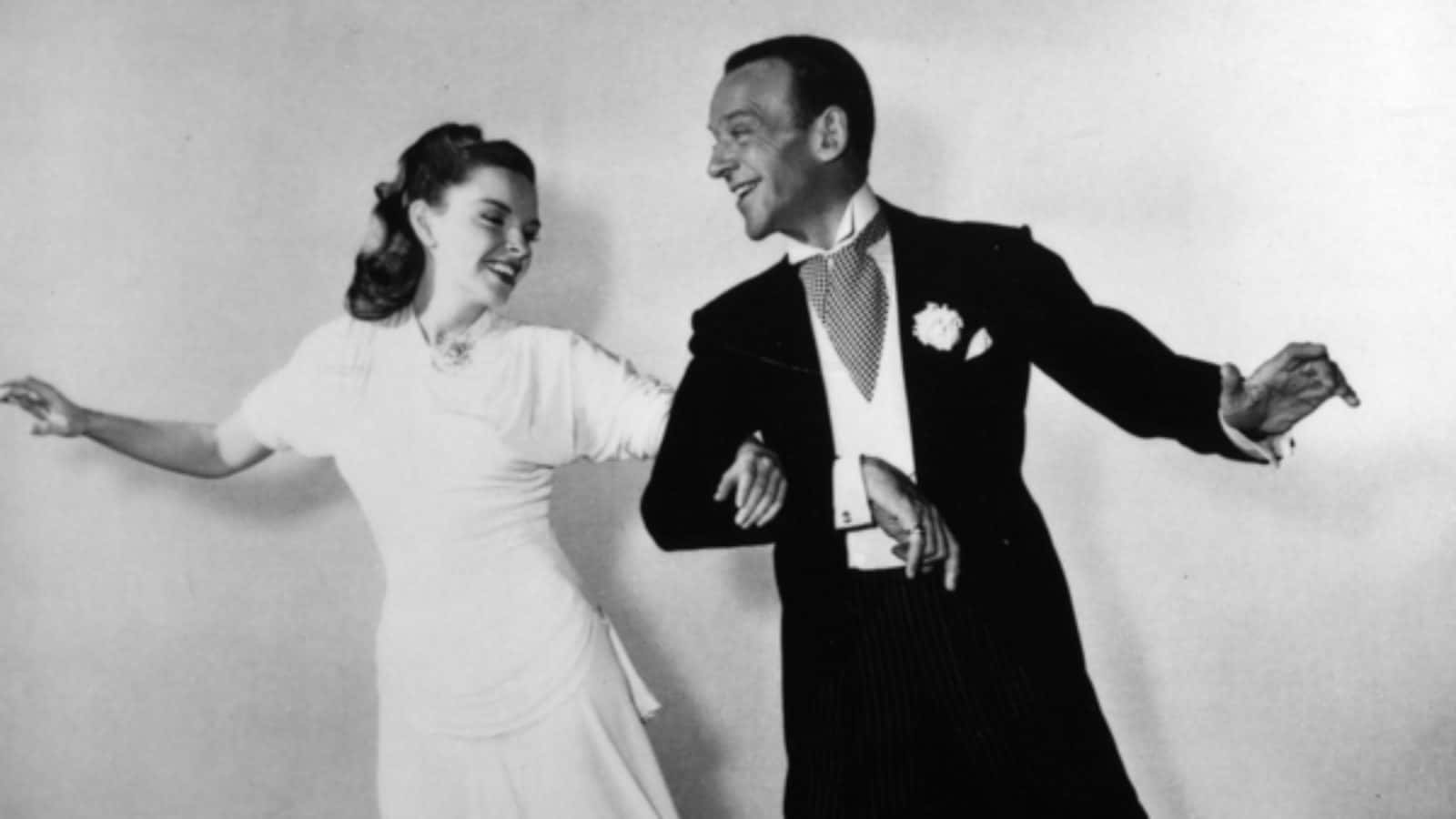 Film Society of Lincoln Center
Film Society of Lincoln Center
94. The Price of Beauty
Young Judy went to great lengths to improve her appearance at the studio’s insistence. Despite dressing her in frumpy or frilly dresses to fit the “girl next door” image they were peddling, Garland was made to wear caps on her teeth and special prosthetics for her nose. Louis B. Mayer, the head of MGM, even called the teenage Garland “my little hunchback,” mocking the curvature of her spine and her short stature: even as an adult, she stood only 4’11”.
95. Body Shaming
As a teenage movie star, Garland’s weight was a constant concern to the movie studio. She was forced on diets of nothing but chicken soup and cottage cheese, and was once served soup and plain lettuce when she ordered a regular meal. This was despite the fact that her weight was well within a healthy range for her age and height.
96. Dangerous Habits
Garland alleged that she was often prescribed amphetamines by the studio to energize her enough to keep up with the frantic pace of filming one movie after another. To help her sleep, she was prescribed barbiturates. This regular regime of dangerous and addictive drug, she said, led to her lifelong battle with addiction.
97. Then Comes Marriage…
Garland began seeing musician David Rose, who presented a diamond engagement ring to her on her 18th birthday in 1938—though at the time Rose was still married to his wife. The studio successfully drove Rose and Garland apart, though after a brief break, Garland and Rose were wed in 1941. Garland was just 19 years old, and Rose was just the first of her five husbands.
98. Office Romance
While it technically wasn’t an “office” romance, Garland met her next husband while on the job. She was cast in Meet Me in St. Louis, the second of her iconic musical roles. Director Vincente Minnelli allowed Garland to appear attractive and sexy, rather than her previous roles where she was portrayed as plain or childlike.
Garland married Minnelli in 1945, despite rumors of his homosexuality. The couple, who had a 20 year age difference between them, had a daughter, Liza, born in 1946.
99. Curtains
The next years of Garland's life were riddled with failed marriages, dramatic on-set antics (including not showing up for work because of her pill habit), and triumphant comeback shows. In 1969, Garland married her fifth husband, nightclub manager Mickey Deans, but it only lasted a few short months. Deans discovered Garland passed of a barbiturate use on June 22nd, 1969.
She was a tragically young 47 years old.
100. Dorothy Dandridge: Pioneer
Sad Hollywood stories are a dime a dozen, but the tragedy of Dorothy Dandridge feels unique. As one of the first African-American superstars of the screen and stage, Dandridge’s life was one of huge potential, and yet it ended in utter, mysterious tragedy. How exactly did “Carmen Jones” rise and fall from grace?
101. Golden Girl
In 1955, Dandridge became the first African-American woman to be nominated for Best Actress for her titular performance in Carmen Jones.
102. A Precedent Takes a Long Time to Repeat
It would take almost 50 years after Dandridge for an African-American actress to finally win the Best Actress trophy at the Oscars. Halle Berry won the gold for her 2002 role in Monster’s Ball. When it came time for her acceptance speech, Berry didn't forget the woman who went before her, and she thanked Dandridge along with Lena Horne and Diahann Carroll.
103. Single Mother Blues Would Be Underselling It
In 1943, Dandridge had her first and only child, Harolyn Suzanne Nicholas, with her husband Harold Nicholas, who was a dancer and entertainer. Unfortunately, the little girl was born with brain damage and required long-term care. Within five years, Dandridge’s husband abandoned them both. But things were only going to get worse for the Hollywood starlet...  Getty Images
Getty Images
104. Swan Song
The exact circumstances of Dorothy Dandridge’s passing remain a Hollywood mystery. The actress called up friends on September 8, 1965 to prepare for her flight to New York for nightclub appearances. She apparently sang Barbara Streisand’s “People” in its entirety over the phone before hanging up with these chilling last words: “Whatever happens, I know you will understand".
105. Gone Too Soon
Several hours after her known last phone call, Dandridge was discovered undressed and unconscious in her apartment by her manager, Earl Mills. She was just 42 years old.
106. This Is a Case for the FBI
Dandridge’s cause of passing has conflicting stories. A pathology institute has argued that her passing was caused by imipramine (an antidepressant) misuse. However, the Los Angeles County Coroner’s Office has insisted she passed of a fat embolism, caused by an injury from her right foot. We may never know the true story about Dandridge's end.
107. Zsa Zsa Gabor: The Hollywood Diva
Long before the Kardashians became famous for being famous, that honor went to Zsa Zsa Gabor. While she was a noted actress in her prime, Gabor’s more lasting fame came from her scandalous socialite activities in the most elite circles of Old Hollywood. From her petty feuds to her multiple marriages, Gabor’s personal life far overshadowed her career.
108. Three Beauties
Gabor was the middle of three daughters, all of whom grew up to be exquisite beauties and celebrities in their own right. Her older sister Magda became an American socialite, while the youngest girl, Eva Gabor, became nearly as notorious a celebrity as Zsa Zsa herself. There's no telling what was in the water in that family!
109. Kept Woman
Gabor's parents were the Jewish-Hungarians Vilmos and Jolie Gabor. Jolie was a noted beauty, jeweller, and socialite in her own day, and her three daughters came by their scandalous diva ways honestly: Jolie was married no less than three times throughout her life, and her last husband was a wealthy Hungarian count.
In a 1976 interview, Jolie said of her aristocratic sugar daddy: "He takes care of me, he takes care of my business, my three homes in Florida, New York, and Connecticut. When I marry him, darling, he looks younger than me, but now, he looks older". Yep, we can definitely see where her girls got it all from...
110. Nice to Meet You, Dahling
Gabor became very well-known during her lifetime for calling everyone “darling,” which her Hungarian accent turned into the drawling, sophisticated “dah-ling". Of course, Gabor wasn't just keeping up her elegant socialite persona: during one of her many TV interviews, she admitted that she called everyone “dah-ling” because it was much easier than actually remembering people’s names.
111. Quite the Social Life
Zsa Zsa's sense of drama wasn't all she got from her mother Jolie. During her life, Gabor was married to nine different men, beating her mommy dearest by a whole bunch of husbands. Seven of these marriages ended in divorce, while another was annulled. But hey, maybe Zsa Zsa was just an utterly hopeless romantic?
112. Born Comedian
Gabor wasn't just a pretty face. She was known for her razor-sharp wit, penchant for one-liners, and self-deprecating humor. On one occasion, when talking about her notorious love life, she quipped, “A girl must marry for love and keep on marrying until she finds it". In a reference to her many divorces, she later joked, “I am a marvelous housekeeper. Every time I leave a man, I keep his house!”
Something tells us this woman would have been legendary on Twitter.
113. Honeymoon Suite
Gabor always had expensive tastes, and she liked to find expensive men to keep the cash flowing. In 1942, she thought she'd found just the man: Conrad Hilton, founder of the famous (and swanky) Hilton Hotel chain. Like most of Gabor's unions, it wasn't wedded bliss: the couple was married a handful of years, but called it quits in 1947.
114. Hard to Find the One
Collectively, the three Gabor sisters were divorced a whopping 18 times.
115. One-Kid Family
Though the Gabor girls were prolific in their marriages, they weren't so industrious when it came to children. In fact, of her sisters, Gabor was the only one to have a child. Her daughter Constance Francesca Gabor Hilton was born on March 10th, 1947 to Gabor and her then-husband, hotel magnate Conrad Hilton.
116. Oh No You Didn’t!
As with any self-respecting Old Hollywood celebrity, Gabor was involved in several feuds. The longest-running one involved a spat with German-born Hollywood star Elke Sommer. The feud began after the two women appeared on the annual television special Circus of the Stars. Reportedly, Sommer made comments about Gabor's weight: When Sommer watched her mount a horse, she muttered, "Poor horse".
117. Keep It Classy
As time went on, the feud only got more and more bitter. Eventually, Gabor and her husband Frederic Prinz von Anhalt gave a shocking interview that called out Sommer for looking like a balding, "100-year-old grandmother". Gabor also added that the actress was so poor she "had to sell her house in Hollywood and now lives in the worst section of Los Angeles".
118. I’ll See You in Court
Eventually, the feud—and this series of colorful comments—landed Gabor and Sommer in libel court in 1992. As it turned out, Gabor's rival won, and the court awarded Sommer a nice $3.3 million in damages. Upon hearing the verdict, Gabor immediately announced her intent to appeal, stating bitterly, “I’d rather see her starve to the end than give her one single dollar".
120. Anna May Wong: Breaking Barriers
Hollywood starlet Anna May Wong defied traditions. Widely considered to be the first Chinese-American movie star in Hollywood, Wong was also the first Chinese-American actress gain recognition on an international level. However, movies aren't even the beginning of Wong's fascinating, dramatic, and scandalous life.
121. Forbidden Love
Despite her rising star and the strength of her acting talent, Wong’s career was hampered by Hollywood’s refusal to give her meaty roles. This was partly due to an anti-miscegenation law, which forbade an interracial couple from kissing on-screen. The lack of Asian-American film stars meant that Wong was denied leading lady roles that would have been hers if she’d been white, or if Hollywood had been less prejudicial.
122. Dressed for the Occasion
During the 1920s and 1930s, Wong was not only a famous actress, but also an international fashion icon. New York’s Mayfair Mannequin Society chose her to be the “World’s Best-Dressed Woman” in 1934.
123. I’m Sorry, What?!
In the 1930s, Wong lobbied fiercely for the lead romantic role in The Good Earth. However, it would have meant that she’d be playing the wife of white actor Paul Muni (who was himself playing a Chinese character). Because Hollywood wouldn’t allow an interracial couple onscreen, Wong was not allowed to play the role of O-lan, despite being the proper ethnic background.
124. That’s Some Real Nerve
Wong was understandably insulted when she was once again denied a Chinese role in The Good Earth. Instead, to accommodate Paul Muni, the role went to white actress Luise Rainer. Wong was offered another role, the villainous character of Lotus, but she furiously and righteously refused to take part in the film at all.
To add insult to injury, Rainer eventually won an Oscar for her work playing the Chinese role.
125. All Good Things Must End
The publicity of Mary Pickford’s marriage to Douglas Fairbanks Sr. sadly contributed to their relationship’s disintegration. Their schedules were filled up with movie-making or public appearances of one form or another. Pickford and Fairbanks also struggled with the end of the silent era, leading Fairbanks to embark on an affair.
The affair was the nail in the coffin, and the two of them divorced in 1936. According to Douglas Fairbanks Jr., his father and his stepmother always regretted the failure of their marriage.
126. Maternal Affliction
When she was only 16 years old, Clara Bow’s mother fell out of a second-story window and suffered brain injuries that would later contribute to her terrifying epilepsy and acute psychosis. No longer herself, Mrs. Bow grew to resent her daughter, and even once put a blade to the teenager’s throat. After the assault, Bow's mother was committed to a sanitorium, where she later gone at the age of 43.
127. Chilling…
In 1991, Zsa Zsa Gabor released her autobiography, which she titled One Lifetime is Not Enough. As you might imagine, some of the claims in the book are incredibly scandalous, though some are more serious than others. In one chapter, Gabor reveals that her only daughter Francesca Hilton was conceived through an act of non-consensual intercourse by Gabor’s then-husband Conrad Hilton.
128. So Fresh and So Clean
Joan Crawford's obsessive cleanliness reared its pristine head even in her bedroom affairs. In his memoirs, Kirk Douglas recalled a particularly disturbing and bizarre romantic encounter when the two stars once went back to Crawford's house. In the middle of the act, Douglas reports, Crawford leaned in and murmured into his ear—but it was far from sweet nothings".
You're so clean," she said. "It's wonderful that you shaved your armpits when you made Champion". As Douglas put it, her passionate outburst was "a real conversation stopper". Nonetheless, Douglas admits that, “All by herself, she was equivalent to my six sisters and my mother.''
129. Are You Team Joan or Team Bette?
Throughout her career, Crawford found herself in competition against fellow Hollywood actress Bette Davis. The two were often up for the same roles, and reportedly even competed for the affections of Franchot Tone, Crawford's second husband. Indeed, this romantic spat was allegedly the beginning of their legendary feud.
The rivalry saw both women call each other out publicly. Davis once said of Crawford that she “slept with every male star at MGM except Lassie,” while Crawford once quipped, “Bette and I work differently. Bette screams and I knit. While she screamed, I knitted a scarf that stretched clear to Malibu". Those are fighting words, Joan.
 Mommie Dearest, Paramount Pictures
Mommie Dearest, Paramount Pictures
130. Drama Queens
Despite their intense rivalry, Crawford and Davis appeared together in the 1962 film What Ever Happened to Baby Jane? They mostly got along during filming, but the trouble really started after the cameras shut off. Crawford pulled out of promoting the film, apparently because she didn’t want to share the stage with Davis (or so said Davis).
The movie about two aging actress sisters was a smash hit at the box office—but then the drama really began.
 Wikimedia Commons, Warner Bros.
Wikimedia Commons, Warner Bros.
131. Controversy at the Oscars
The real-life melodramatics around What Ever Happened to Baby Jane? continued at the Oscars. Davis received a nomination in the Best Actress category, while Crawford didn’t. This must have stung Crawford, because she contacted all the other Best Actress nominees and "graciously" offered to accept any award on their behalf in the event that they couldn't attend the show. Since they were all located on the East coast, they all agreed.
Sure enough, Davis lost out, and Anne Bancroft won the award for her role in The Miracle Worker. Bancroft wasn’t able to attend, so Crawford waltzed onto the stage in her place and accepted the statuette in front of an unimpressed Davis. Forever after that moment, Davis claimed that Crawford had campaigned against her in the Oscar race.
132. Head Case
During the conflict, Bette Davis tragically lost her second husband, Arthur Farnsworth, but he did not passed in battle. However,his passing was due to violent reasons: he passed out in a Hollywood street and passed two days later. When the autopsy came back, it revealed that he was gone from a skull fracture incurred two weeks before.
Davis testified she didn’t know what could possibly have caused the fatal injury, and the court's labeled Farnsworth’s passing an accident.
Sources: 1, 2, 3, 4, 5, 6, 7, 8, 9, 10, 11, 12, 13, 14, 15, 16, 17, 18, 19, 20, 21, 22, 23, 24, 25, 26, 27, 28, 29, 30, 31, 32, 33, 34, 35, 36, 37, 38, 39, 40, 41, 42, 43, 44, 45, 46, 47, 48, 49, 50, 51, 52, 53, 54, 55, 56, 57, 58, 59, 60, 61, 62, 63, 64, 65, 66, 67, 68, 69, 70, 71, 72, 73, 74, 75, 76, 77, 78, 79, 80, 81, 82, 83, 84, 85, 86, 87, 88, 89, 90, 91, 92, 93, 94, 95, 96, 97, 98, 99, 100, 101, 102, 103, 104, 105, 106, 107, 108, 109, 110, 111, 112, 113, 114, 115, 116, 117, 118, 119, 120, 121, 122, 123, 124, 125, 126, 127, 128, 129, 130, 131, 132, 133, 134, 135, 136, 137, 138, 139, 140, 141, 142, 143, 144, 145, 146, 147, 148, 149, 150, 151, 152, 153, 154, 156, 157, 158, 159, 160, 161, 162, 163, 164, 165, 166, 167, 168, 169, 170, 171, 172, 173, 174















